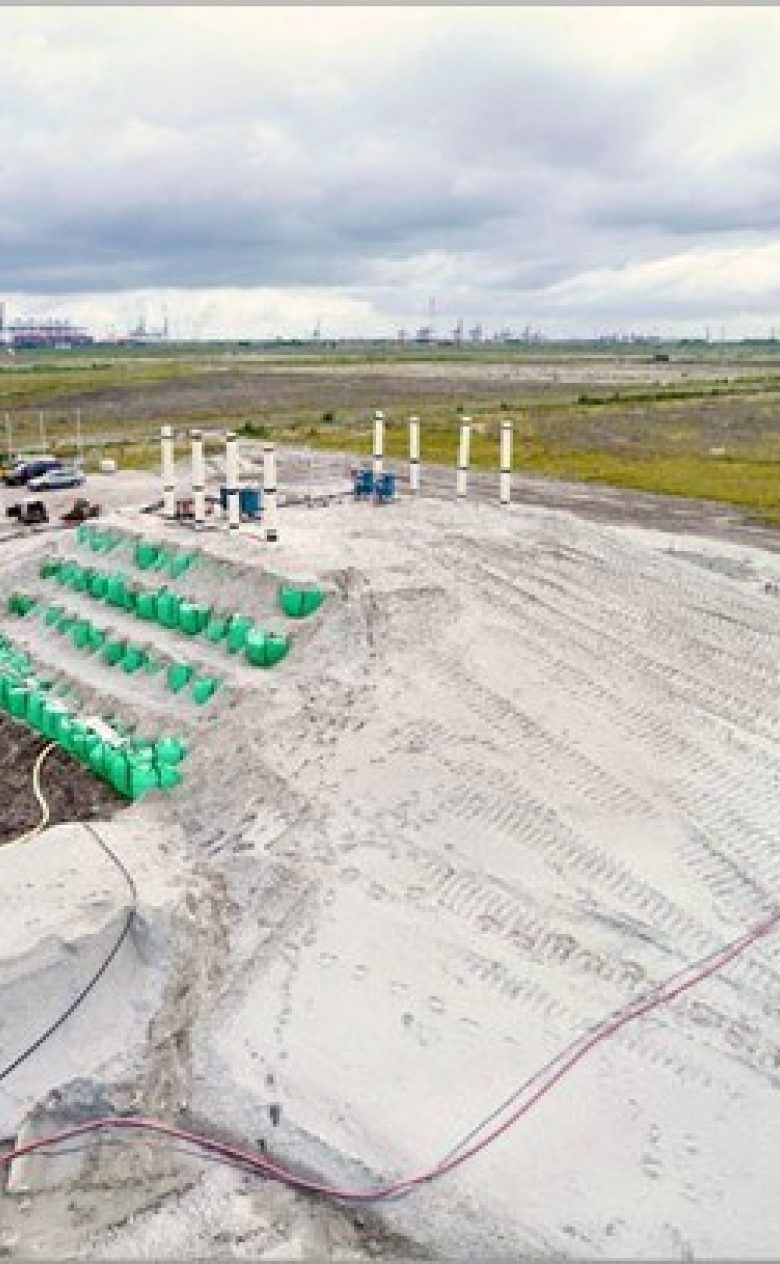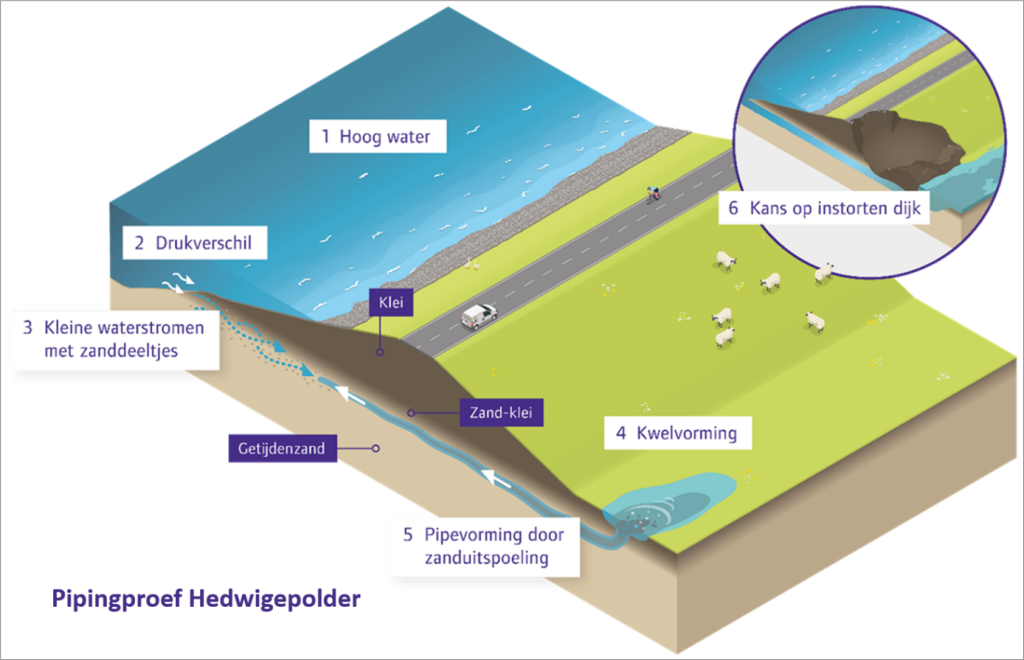Dikes on tidal sand: much stronger than thought
Dikes on a substrate of tidal sand (sand deposited in a tidal area) are more resistant to ‘piping’ than dikes on river-sand deposits. That has been demonstrated by a large-scale innovative research project in the Hedwige polder in Zeeland (NL). Thanks to the project, at least 160 million euros will be saved, local residents will be inconvenienced less by dike upgrade projects and the burden on the environment will be reduced. The project was conducted in close collaboration by Deltares, the Hollandse Delta water authority, the Dutch Flood Protection Programme and Fugro.

Piping: small channels under a dike
Dikes in the Netherlands regularly fail inspections because of the risk of ‘piping’, the unwanted formation of channels under the dike. The water in these channels rinses away sand grains and therefore affects the stability of the dike.
When small quantities are involved, that is not a major problem. But a larger flow of water transporting sand can seriously undermine a dike or even lead to its failure, and therefore flooding. Tidal sand is much less permeable than river sand and it contains many more clay particles and layers of clay. That reduces the flow of water and so sand grains are not moved as easily as in river sand.

Results of computer model
For the research project in the Hedwige polder, the assessment of how resistant a dike is to piping involved the use of a computer model based on river sand without clay particles. The Hedwige project, which culminated in the piping trials in the Hedwige polder, has shown that tidal sand is at least 40% stronger.
The knowledge and insights from this trial can be used for the assessment and strengthening of dikes, not only throughout the Netherlands but also in other countries in areas with comparable deposits such as Belgium, Germany and the Mississippi Delta. It is expected that the Hollandse Delta water authority can make considerable savings because the area it manages has, by comparison with other water authorities, large numbers of tidal deposits affected by piping.
The strengthening of dikes depends on innovation. The Netherlands is on the eve of the largest flood risk management operation since the Delta Works. Innovations like these make the difference when it comes to achieving our dike upgrade goals in the Netherlands because flood risk management is a job that is never done. The Hollandse Delta water authority, Fugro and Deltares have done incredibly important work.
Erik Wagener, the director of the Flood Protection Programme
In this project, we started small with small-scale laboratory research before expanding the scope to include several unique field trials. The project was successful mainly because we brought together a lot of different knowledge. I think it is wonderful to see how the results can now be applied directly in practice. That’s what your job as a researcher is all about.
Marc Hijma, geologist with Deltares
About the project
The innovation project cost approximately 5 million euros. The cost savings amount to at least 160 million euros because many dikes will need less extensive reinforcement, or none at all, if the new results are taken into account. The planned upgrade of a section of the Geervliet - Hekelingen dike managed by the Hollandse Delta water authority will be cancelled in full. Less drastic measures will be needed on sections totalling some 92 kilometres.
The large-scale piping trial was conducted in the Hedwige polder in the Hedwige-Prosper polder Living Lab. The project has resulted in concrete recommendations about how the additional strength of tidal sand can be taken into account in practice. The Flood Risk Management Expertise Network (ENW) – a network of some seventy experts in the field of flood risk management – has reviewed the proposed approach and recommended its application.


